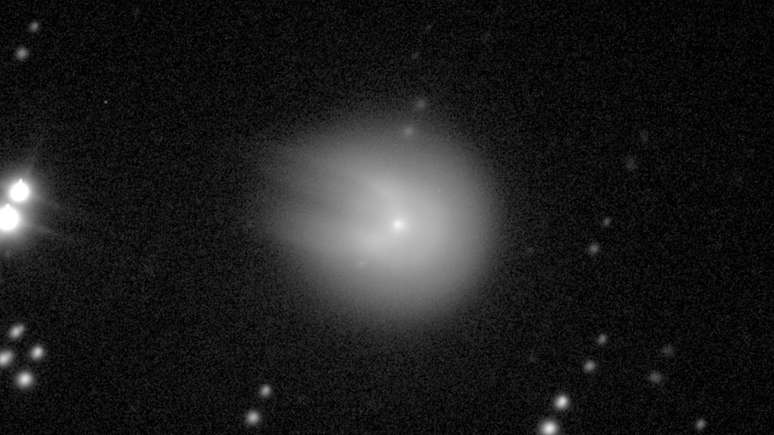Comet 12P/Pons-Brooks became known as the Devil’s Comet because of its horn-like coma. After the last eruption the “horns” seem to have disappeared
OR comet 12P/Pons-Brooks, or simply 12P, has undergone its most violent eruption recorded to date. The phenomenon surprised astrophotographers: after the explosion, 12P no longer showed the long filaments in its coma that gave it the nickname Devil’s Comet. There has also been another change: his coma now shows shades of green.
- What is the difference between an asteroid, a comet and a meteor?
- Comet 12P/Pons-Brooks will approach Earth in 2024. Are there any risks?
The other 12P eruptions occurred between July and October. In each explosion, its coma (the gaseous envelope that surrounds the nucleus of the comet) expanded and took on an irregular shape, marked by a dark area in the center: for some the structure resembled horns, hence the nickname ‘object.
The new eruption occurred on November 14, and was so strong that it made the comet shine 100 times brighter than had been recorded until then. And this time he left 12P without his characteristic “horns”. “The coma appears perfectly circular this time,” noted Nick James of the British Astronomical Association.
This is the small, telescopic one #Comet 12P/Pons-Brooks, on November 18, 2023. It recently showed a burst of brightness, but was still faint at magnitude 9 or so. It shows a very faint tail extending from the crown to the upper left. With a 90mm refractor for a 4.7° FOV. pic.twitter.com/BGoeLsyD9U
—Alan Dyer (@amazingskyguy) November 19, 2023
It is not yet clear why the elongated coma structures disappeared, but it is possible that there is some relation to the eruptions. When the comet exploded for a third time in late October, the horns were much less elongated than in previous eruptions. Therefore, it is possible that the structure of the comet that helped form them was damaged.
“The ‘devil’ could disappear immediately,” joked amateur astronomer Eliot Herman. Herman has already taken several photos of the comet, and the most recent recordings show that it is his the coma is greenish. The color is rare and occurs when there is a high amount of dicarbon being broken down by sunlight.
Learn more about comet 12P/Pons-Brooks (12P)
Comet 12P measures 17 km in diameter and is periodic and takes 71 years to complete one revolution around the Sun. It is of the type cryovolcanic, that is, it is formed by a core full of ice and gas. Sunlight causes the internal cryomagma to heat up, and as pressure increases, the core ruptures and releases the material in eruptions.
This process caused the comet’s coma to expand, appearing much brighter than it actually is. With each eruption, the coma grew while being partially blocked by a notch in the comet’s nucleus: this structure helped form the horns that inspired the nickname 12P.
At the moment, comet 12P is traveling at 64,300 km/h towards the Sun. It will reach perihelion (closest approach to our star) in April 2024, and then continue its journey towards the outside of the Solar System. In June the comet will be close to Earth and, who knows, maybe it will be visible to the naked eye.
Source: Science live
Trends on Canaltech:
- X-Men’s Living Island Dons Stark Armor and Becomes “Iron Krakoa”
- Black Friday | Post office employees can strike in SP, RJ and more
- Black Friday 2023 | Kabum will have discounts of up to 80% and online stock
- Ayrton Senna had a collection of incredible cars
- One UI 6 will launch in Latin America in December, Samsung confirms
- What is the best notebook under R$2,500 to buy on Black Friday?
Source: Terra
Rose James is a Gossipify movie and series reviewer known for her in-depth analysis and unique perspective on the latest releases. With a background in film studies, she provides engaging and informative reviews, and keeps readers up to date with industry trends and emerging talents.








